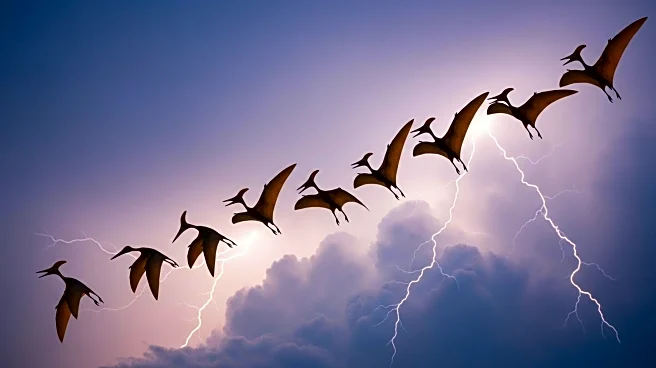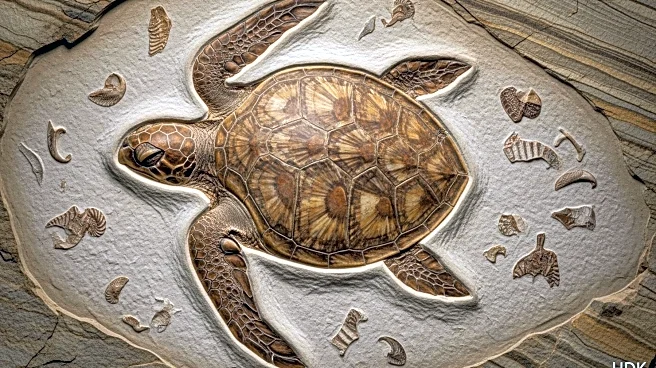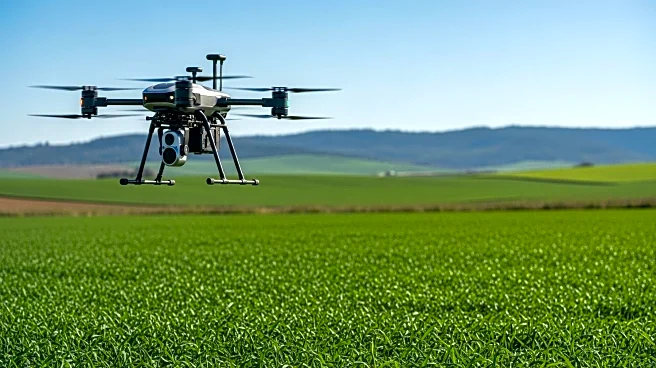What's Happening?
Recent paleontological findings from the Solnhofen site in southern Germany have revealed that baby pterodactyls were capable of flight shortly after hatching. Researchers David Unwin and Robert Smyth from the University of Leicester discovered fossils of Pterodactylus antiquus hatchlings with broken wing bones, indicating that these young creatures attempted to fly but were likely caught in severe tropical cyclones. The fossils, encased in limestone, show clean breaks in the humerus, suggesting the hatchlings died shortly after sustaining these injuries. The site, part of an ancient archipelago, was prone to rapid underwater mudslides during storms, which preserved the remains of these pterosaurs. This discovery provides direct evidence of flight capabilities in pterosaur hatchlings, a topic that has been debated among paleontologists.
Why It's Important?
The ability of pterosaur hatchlings to fly shortly after birth is significant as it sheds light on the evolutionary adaptations of these ancient creatures. Understanding their flight capabilities helps scientists comprehend the ecological roles pterosaurs played in their environments. The findings also contribute to the broader knowledge of vertebrate flight evolution, offering insights into how early flying animals adapted to their surroundings. This research could influence future studies on the biomechanics of flight in extinct species, potentially impacting how scientists interpret fossil records and reconstruct the behaviors of prehistoric animals.
What's Next?
Further research may focus on examining additional pterosaur fossils to confirm the prevalence of early flight capabilities among different species. Scientists might also explore the environmental conditions of the Solnhofen site to better understand the impact of tropical cyclones on pterosaur populations. These studies could lead to new discoveries about the survival strategies of pterosaurs and their interactions with other species in their ecosystems. Additionally, advancements in technology, such as improved imaging techniques, could enhance the analysis of fossilized remains, providing more detailed insights into the life and challenges faced by these ancient flyers.
Beyond the Headlines
The discovery of flight capabilities in pterosaur hatchlings raises questions about the survival strategies of young animals in prehistoric times. It suggests that early flight might have been a necessary adaptation for avoiding predators or exploring new habitats. This finding also highlights the harsh realities of ancient ecosystems, where severe weather events could drastically affect animal populations. The study of these fossils not only enriches our understanding of pterosaur biology but also prompts considerations of how modern species might adapt to changing environmental conditions.













